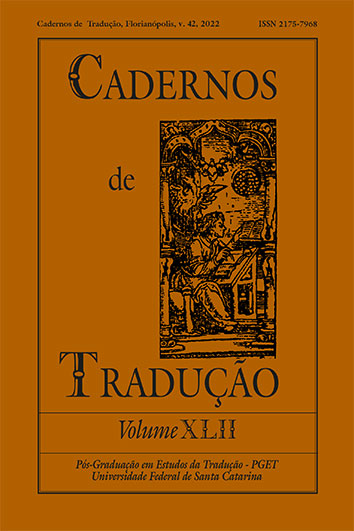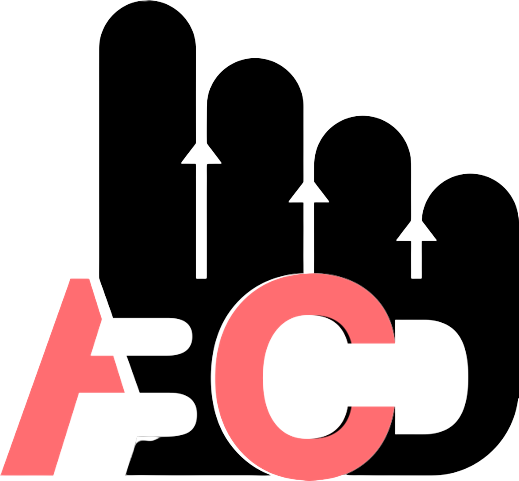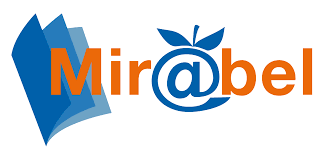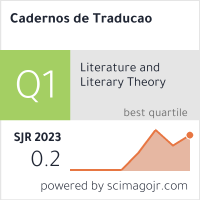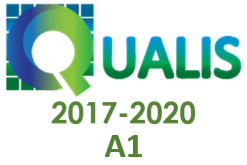Mozilla in P’urhépecha: translators’ agency in a software translation project
DOI:
https://doi.org/10.5007/2175-7968.2022.e85270Keywords:
Software Translation, Translation Training, Threatened Languages, P’urhépecha TranslationAbstract
In an effort to preserve and encourage the use of endangered languages, the last decade has witnessed the emergence of transnational projects funded by technology and software development companies such as Google and the Mozilla Foundation. Launched in 2012 by the Mozilla Foundation, the project ‘Native Mozilla’ is aimed at creating a more inclusive digital environment by developing web browsers and applications that will facilitate internet access and use to Latin American indigenous populations. A group of community users, translators, language teachers, developers, activists and other organizations have been particularly active in the translation of Firefox and Firefox Focus, Mozilla’s browsers for PC and Android, in 50 indigenous languages from Argentina, Bolivia, Chile, Colombia, Ecuador, Guatemala, Mexico, Paraguay, and El Salvador. P’urhépecha is the main indigenous language of the state of Michoacán, Mexico. Spoken by nearly 120 000 speakers is considered as a threatened language. This article focuses on the translation project of Firefox Focus to P’urhépecha that took place from November 2014 to November 2018, and that involved the participation of P’urhépecha language and culture teachers, and students and alumni of the BA in Intercultural Language and Communication. In addition to describing the merits and shortcomings of the project, we will examine the translation and the training process. We will be arguing that the limited literacy in P’urphépecha shaped the role played by the working languages, thus influencing their translation choices and strategies.
References
Acevedo Conde, María Luisa. “Políticas lingüísticas en México de los años cuarenta a la fecha”. In: Cuarón, Beatriz Garza (Ed.). Políticas lingüísticas en México. Ciudad de México: La Jornada-Centro de Investigaciones Interdisciplinarias en Ciencias y Humanidades-UNAM, 1996. p. 191-204.
Assis Rosa, Alexandra; Pieta, Hanna & Bueno Maia, Rita. “Theoretical, methodological and terminological issues regarding indirect translation: An overview”. Translation Studies, 10(2), p. 113-132, 2017. DOI: https://doi.org/10.1080/14781700.2017.1285247
Baldauf, Richard B. & Kaplan, Robert B. Language planning and policy in Latin America. Vol. 1, Ecuador, Mexico and Paraguay. Clevedon: Multilingual Matters, 2007.
Barriga Villanueva, Rebeca. Políticas lingüísticas y lenguas indígenas, entre historias, discursos, paradojas y testimonios. Ciudad de México: SEP, 2019.
Bonfil Batalla, Guillermo. “El concepto de indio en América: una categoría de la situación colonial”. Anales de Antropología, 9, p. 105-124, 1972. DOI: http://dx.doi.org/10.22201/iia.24486221e.1972.0.23077
Castillo Ramírez, Guillermo. “The Cultural change as indigenist program: Gamio and the Interamerican Indigenist Institute”. Signos Históricos, XXI (42), p. 146-179, 2019.
Chamoreau, Claudine. Hablemos purépecha. Morelia: Universidad Intercultural Indígena de Michoacán, 2009.
CONEVAL. “Medición de la pobreza. Pobreza en México”. CONEVAL. 2018. Available at: https://www.coneval.org.mx/Medicion/Paginas/PobrezaInicio.aspx. Accessed on: Dec. 14, 2021.
Desmet Argain, Céline M.-J. 2008. “Traducción literaria y lenguas indígenas en México: Entre el deseo y la realidad”. In: Camps, Assumpta & Zybatow, Lew (Coords.). Traducción e interculturalidad: Actas de la Conferencia Internacional “Traducción e Intercambio Cultural en la Época de la Globalización”, mayo de 2006, Universidad de Barcelona. Frankfurt: Peter Lang, 2008. p. 109-124.
Digital Inclusion Newslog. “Key ideas from 2017 to Achieve Internet for All”. Digital Inclusion Newslog. 2017. Available at: http://digitalinclusionnewslog.itu.int/2018/01/05/key-ideas-from-2017-to-achieve-internet-for-all/. Accessed on: Dec. 14, 2021.
Dunne, Keiran J. “Localisation”. In: D’hulst, Lieven & Gambier, Yves (Eds.). A History of Modern Translation Knowledge: Sources, concepts, effects. Amsterdam/Philadelphia: John Benjamins, 2018. p. 123-126.
Eisenberg, Avigail & Spinner-Halev, Jeff. Minorities within minorities: Equality, rights and diversity. Cambridge: Cambridge University Press, 2005.
Endangered Languages Project [ELP]. “Purepecha”. ELP. 2019. Available at: http://www.endangeredlanguages.com/lang/7569. Accessed on: Dec. 20, 2019.
Giraudo, Laura & Furio, Victoria J. “Neither ‘Scientific’ nor ‘Colonialist’: The Ambiguous Course of Inter-American ‘Indigenismo’ in the 1940s”. Latin American Perspectives, 39(5), p. 12-32, 2012. DOI: https://doi.org/10.1177%2F0094582X12447275
González Ambrosio, Bulmaro. Vandaqua Mayoparatantstani. Traducción funcional de terminología informática del inglés al p’urhépecha [unpublished thesis]. Uruapán: Universidad Pedagógica Nacional, 2018.
Grin, François. “Translation and the dynamics of multilingualism”. Cahier de recherché élf, 3, p. 1-25, 2010. Available at: http://www.unige.ch/traductioninterpretation/recherches/groupes/elf/documents/elfwp3.pdf. Accessed on: Dec. 14, 2021.
Howard, Rosaleen; Pedro Ricoy, Raquel de & Andrade, Luis. 2018. “Translation policy and indigenous languages in Hispanic Latin America”. International Journal of the Sociology of Language, 251, p. 19-36, 2018. DOI: https://doi.org/10.1515/ijsl-2018-0002
Inter-American Indigenist Institute. “Convention Providing for the Creation of the Inter-American Indian Institute”. Multilateral Agreements 1931-1945, November 1, 1940. p. 661-670.
Jansenson, Ester & Sada, Esther. “La situación de la traducción y la interpretación de lenguas indígenas en México”. In: González, Luis & Hernúñez, Pollux (Eds.). Actas del IV Congreso “El Español, Lengua de Traducción”, 8-10, May 2008, Toledo. Madrid: Esletra, 2010. p. 431-437.
Jaurégui, Luis. “The Bourbon Reforms”. In: Escalante Gonzalbo, Pablo; García Martínez, Bernardo; Jáuregui, Luis; Zoraida Vázquez, Josefina; Guerra, Elisa Speckman; Garciadiego, Javier; Aboites Aguillar, Luis (Eds.). A New Compact History of Mexico. Translated by Elaine Jones, Fionn Petch, CM Idiomas, S.C. Final full version and proofreading by Susan Beth Kapilian, Mexico City: El Colegio de México, 2014. Electronic version.
Kymlicka, Will. “The internationalization of minority rights”. International Journal of Constitutional Law, 6(1), p. 1-32, 2008. DOI: https://doi.org/10.1093/icon/mom032
Meylaerts, Reine, & du Plessis, Theo. “Multilingualism studies and translation studies”. In: Gambier, Yves & van Doorslaer, Luc (Eds.). Border Crossings. Translation Studies and other disciplines. Amsterdam/Philadelphia: John Benjamins, 2016. p. 262-285.
Nandwana, Akshay. 2018. “International business: Localization on Google Play”, Medium, January 18. Available at: https://medium.com/mindorks/internationalbusiness-localization-on-google-play-18b4d3ad779a [Accessed 14 December
.
Nava López, Fernando. “La necesidad de construer nuevas políticas públicas en materia de lenguas indígenas en México”. In: Arias Álvarez, Beatriz & Serrano, Julio (Eds.). Políticas lingüísticas en dos mundos: Experiencias en Galicia y en México. Ciudad de México: UNAM-Xunta de Galicia, 2015. p. 51-87.
Patrick, Donna. “Indigenous language endangerment and the unfinished business of nation states”. In: Duchêne, Alexandre & Heller, Monica (Eds). Discourses of Endangerment. Ideology and Interest in the Defence of Languages. London: Continuum, 2007. p. 35-66.
Pym, Anthony. “Localization from the Perspective of Translation Studies: Overlaps in the Digital Divide”. Kathmandu: SCALLA Conference, 2004.
Sánchez, Aquilino & Dueñas, María. “Language Planning in the Spanish-Speaking World”. Current issues in Language Planning, 3(3), p. 290-305, 2002. DOI: https://doi.org/10.1080/14664200208668042
Sandrini, Peter. “Localization and Translation”. MuTra Journal, 2, p. 167-191, 2008.
Schäler, Reinhard. “Translators and Localization”. The Interpreter and Translator Trainer, 1, p. 119-135, 2007. DOI: https://doi.org/10.1080/1750399X.2007.10798754
Skrobot, Kristina. Las políticas lingüísticas y las actitudes hacia las lenguas indígenas en las escuelas de México. PhD Thesis [unpublished]. Universitat de Barcelona, 2014.
Swadesh, Morris. “Proyecto de Plan de Educación Indígena en Lengua Nativa Tarasca”. Boletín Bibliográfico de Antropología Americana, 3(3), p. 222-227, 1939.
UNESCO. “Atlas of the World’s Languages in Danger”. UNESCO. 2019a. Available at: http://www.unesco.org/languages-atlas/en/statistics.html. Accessed on: Dec. 14, 2021.
UNESCO. “New report on global broadband access underscores urgent need to reach the half of the world still unconnected”. UNESCO. 2019b. Available at: https://en.unesco.org/news/new-report-global-broadband-access-underscoresurgent-need-reach-half-world-still-unconnected. Accessed on: Dec. 14, 2021.
University of Hawaii. “For example, while Google’s and Apple’s search pages are available in 149 and 126 languages, respectively, Firefox, Mozilla’s web browser, is available in only 90 languages”. University of Hawaii. 2012. Available at: https://manoa.hawaii.edu/news/article.php?aId=5162. Accessed on: Dec. 14, 2021.
Warnholtz, Margarita. “No es por el INALI que sobreviven las lenguas indígenas”. Animal político. 26 jun. 2015. Available at: https://www.animalpolitico.com/codices-geek/no-es-por-el-inali-que-sobreviven-las-lenguas-indigenas/. Accessed
on: Dec. 14, 2021.
WEF. “Internet for All. An Investment Framework for Digital Adoption”. World Economic Forum. 2017. Available at: http://www3.weforum.org/docs/White_Paper_Internet_for_All_Investment_Framework_Digital_Adoption_2017.pdf.
Accessed on: Dec. 14, 2021.
Zavala Ramos, Santiago & Sebastián Valdéz, Salud. Traducción de los términos informáticos al p’urhépecha del software libre Abiword [unpublished B.A. Thesis]. Uruapan: Universidad de Michoacán, 2016.
Downloads
Published
How to Cite
Issue
Section
License
Copyright (c) 2022 Cadernos de Tradução

This work is licensed under a Creative Commons Attribution 4.0 International License.
Copyright Notice
Authors hold the copyright and grant the journal the right for their articles' first publication, being their works simultaneously licensed under the Creative Commons Attribution License (CC BY), which allows the sharing of such works with its authorship acknowledged and its initial publication in this journal.
Authors are allowed to enter into separate additional contractual arrangements for the non-exclusive distribution of the journal's published version of the work (e.g., post it to an institutional repository or as a book chapter, with an acknowledgment of its initial publication in this journal).

